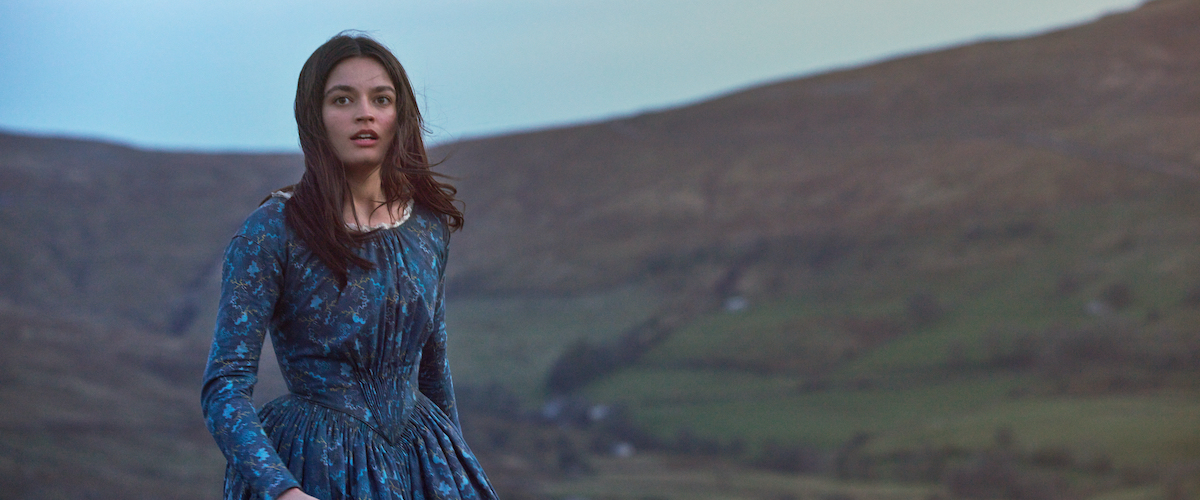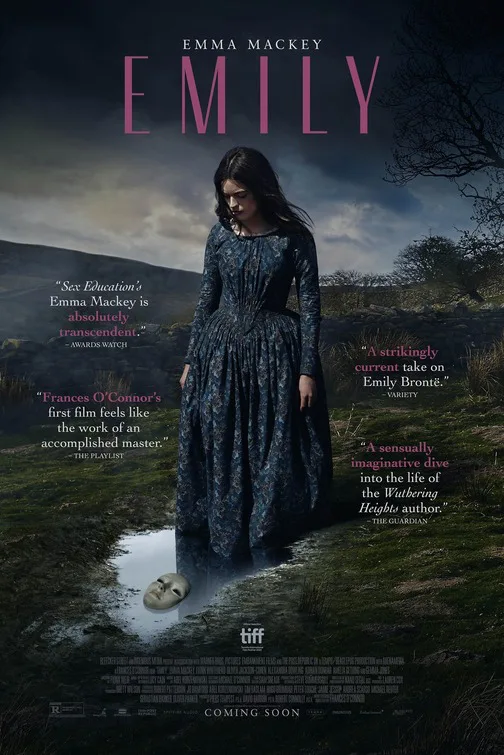“If I could I would work in silence and obscurity, and let my efforts be known by their results.” — Emily Brontë
Her wish came to pass. Wuthering Heights is a book for the ages, and her poetry (unlike her sisters’), still lifts off the page with bleak despairing imagery and a ferocious independence of tone. Her most famous poems—No Coward Soul is Mine (which Emily Dickinson apparently asked to have read at her funeral) and Remembrance—are regularly anthologized. I encountered Often Rebuked in high school, and the following lines helped me get through those sometimes rocky years.
I’ll walk where my own nature would be leading:
It vexes me to choose another guide.
Words to live by, and Emily lived by them in her tragically short life. But what do we know about her, really? Charlotte described her as “a solitude-loving raven, no gentle dove.” Emily rarely left home (and when she did leave home, it usually ended badly). This means we don’t have a voluminous correspondence from Emily in the way we have from Charlotte, who went away to school and work, writing multiple letters a day. Much of what we know about Emily comes from Charlotte, the sole surviving sibling after the catastrophic one-year period (1848-1849), where sisters Anne and Emily and brother Branwell all died. Given the spotty record, speculation about what might have been going on fills the void. Frances O'Connor‘s “Emily” engages in some really wild speculations, some of which I’ve heard, others which are new to me, but it’s all in an attempt to get close to the most mysterious Brontë, not just as a person but as an artist.
In this, O'Connor has a perfect partner in Emma Mackey, who plays Emily with sensitivity and freedom. She’s not held back by an imposed “conception” of this woman. She’s let loose. Her Emily is joyous, sulky, troubled, paralyzed with anxiety, rebellious, and passionate. There’s reason to believe all of this is true. The local villagers referred to Emily as “the strange one,” and without overplaying it, Mackey suggests why. She can’t make eye contact with people. She shrinks from interactions with non-family members. When Michael Weightman (Oliver Jackson-Cohen), Mr. Brontë’s new assistant curate, enters the family circle, he disturbs the waters. His sermons are the opposite of Mr. Brontë’s fire-and-brimstone declarations. Weightman speaks of a gentle, almost thoughtful God. The Brontë sisters listen enraptured, and they also can’t fail to notice he’s easy on the eyes. Emily responds to him combatively, at first, poking holes in his arguments, refusing to concede ground. Naturally, he’s drawn to her the most.
There are a number of extraordinary sequences, speculative in nature, but which make so much sense thematically and emotionally. “Emily” goes deep. (Surface events are minimal, anyway. A similar issue arises with Emily Dickinson, whose life was not crowded with outer events. But look to “the results.” It’s possible to never leave home and live a dramatic inner life. This is what Frances O’Connor explores wonderfully well.) There’s a scene where Emily, goofing around with her siblings and Weightman, puts on a ceramic mask. At first, it’s part of a game until Emily transforms, the mask providing her the anonymity necessary to express the grief beneath the surface, all as a storm rises outside. The scene is an incredible work of imagination, anchored in what we already know and what we can guess at, considering Wuthering Heights. It evokes—without underlining the connection—the book’s terrifying opening scene, with the ghost rattling at the window frame, imploring to be allowed inside out of the storm.
The relationships are all in flux. Sister Charlotte (Alexandra Dowling) looks at wild Emily with concern. Sister Anne (Amelia Gething) is an ally at first but eventually moves out of reach. This leaves Branwell (Fionn Whitehead). One can only imagine what it must have been like to be the only brother to these three majestic Weird Sisters. He had an artistic sensibility but lacked drive and discipline. He led a dissipated scandalous life. The relationship between Emily and Branwell is the heart of the film—the two rebels supporting each other, for better or worse, shared by the mirroring relationship between Emily and Weightman.
What “Emily” does so well is establish a mood. The mood is flexible enough to contain multitudes. Nanu Segal’s cinematography is sparked with energy and drive. There are times when the camera hurtles through the rooms or across the fields, chasing after Emily, careening around corners, almost like it’s going to crash into a wall. The romantic scenes between Emily and Weightman shiver with a passion so forbidden—and so foreign to Emily—you worry for her. You know the end. “Emily” takes place before the sisters all started getting published. But work is growing in them.
The question has dogged critics for two centuries now: How on earth could a woman who grew up in virtual isolation come up with a story as feral as Wuthering Heights? Jane Eyre has its madness (Mr. Rochester dressing in drag! The lunatic woman trapped in the attic! Mr. Rochester calling to Jane across the space-time continuum!), but Wuthering Heights makes Jane Eyre look tame. Wuthering Heights takes place in a world of godless chaos. Dante Gabriel Rossetti wrote of the book in 1854, “The action is laid in Hell—only it seems places and people have English names there.” There’s nothing soft in Wuthering Heights. How could someone with no life experience think up such a story?
It’s understandable to want historical accuracy in a biopic. Critiques of whitewashing are often on point. But there are deeper concerns, ones which so many biopics dodge. Why does this person matter? Why has their art lasted? Who were they as an artist? There have been numerous biopics that are not Wikipedia pages come to life but extended meditations on the artist’s work, its impact, and the persona of the artist as an artist (Stanley Kwan’s “Center Stage,” Bill Pohlad’s “Love & Mercy,” Madeleine Olnek’s “Wild Nights with Emily,” Todd Haynes’ “I'm Not There,” to name just a recent few). There have been charges of historical inaccuracy thrown at “Emily.” (The ending of the recent “Corsage” is a fascinating example of total lack of historical accuracy. It didn’t happen that way at all. But what does it provide us imaginatively, speculatively, about the Empress?) It’s long been thought that Anne was the one in love with Weightman, that something happened between them. People point to passages in her novel that seem to correspond. That’s fine. It’s possible. But it’s still just speculation. What if it were Emily?
We’ll never know why Branwell painted himself out of the portrait he did of his three sisters, creating the strange effect of a golden pillar of Branwell-shaped flame between Emily and Charlotte. We don’t know if he even did paint himself out. Maybe he didn’t paint himself out at all, maybe he painted his sisters over another work. Maybe we’re way off about all of it. We weren’t there. But guessing is how we get closer to what matters: Who was Emily? How did she make sense of life? How did this go into her work? We know Emily by her results. The rest is silence. And imaginative leaps like Frances O’Connor’s “Emily.”
Now playing in theaters.




















